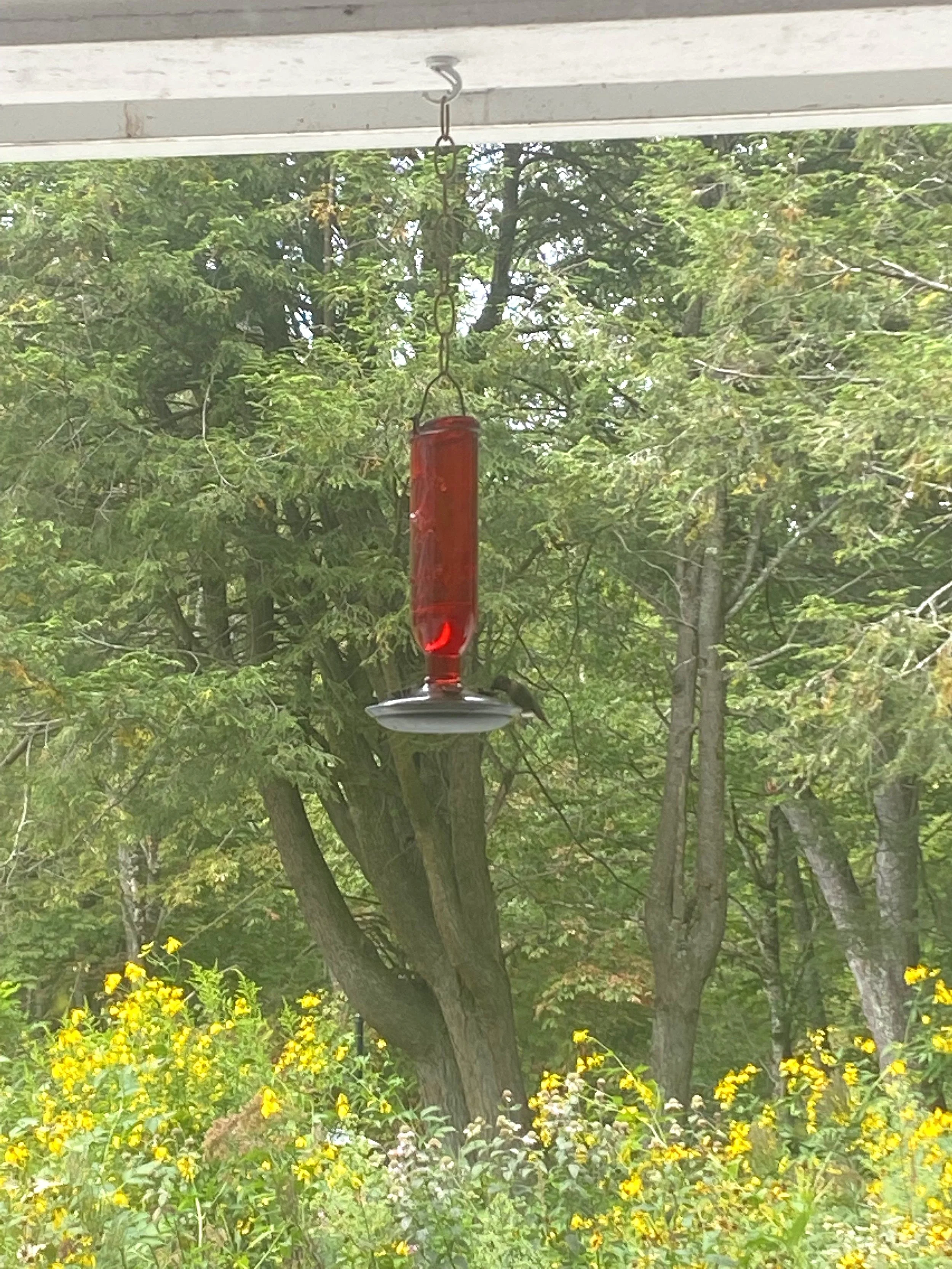It's Hummingbird Migration Season!
We are about one week away from the official start of Fall, which means it is time for hummingbird migration! In Virginia, the most common hummingbird is the Ruby-throated hummingbird. These hummingbirds can be identified by their distinct color patterns. The female ruby-throated hummingbirds have an emerald crown and back with a white throat, and the males have an emerald back and crown with an iridescent red throat. The iridescent red throat can only be seen in bright daylight, however, due to their structural coloration and lack of pigmentation. The red color that is seen on these hummingbirds is actually reflected light off of thin layers of air bubbles found between the feathers of the bird, meaning that the iridescent red color can only be witnessed in broad daylight. This is a useful thing for hummingbirds that don’t want to draw too much attention to themselves in forested areas because it allows them to camouflage more into their surroundings. On the flip side, the red throat in the light is useful in attracting a mate.
Hummingbirds in Virginia, and all over North America, begin their migration in the fall due to the decrease in temperatures. During this period in time they will travel all the way to various locations in Central America. Then in the spring, the hummingbirds come back to their previous locations in North America. Hummingbirds do this because they encounter less competition in North America during the summertime for food in comparison to the heavily populated tropics.
Nectar is the biggest food source for these hummingbirds. They tend to feed from red and yellow flowers or hummingbird feeders left outside by generous hummingbird lovers. Hummingbird feeders are a great way to provide sustenance to your local hummingbird species if the sugar solution is prepared in the correct way. These feeders are especially crucial during this migration time. It is more healthy for the hummingbirds to sip from a homemade sugar water solution rather than a store-bought red sugar solution. The best way to make the nectar is to boil four cups of water, which allows any impurities in the water to be alleviated, and mix that with one cup of pure cane sugar. Placing this mixture in a red hummingbird feeder will attract the hummingbirds without needing to add the artificial red dye to the actual sugar solution. Hummingbirds tend to feed from feeders more regularly as they make their way down to Central America, so set out your feeders and say goodbye to the last of the hummingbirds until Spring!
